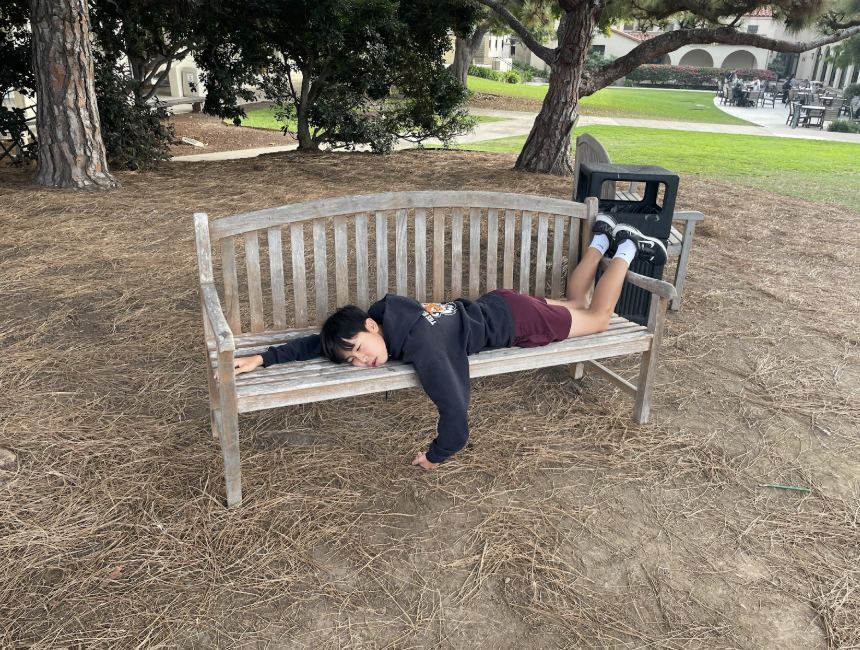At Bishop’s, the student activities list looks stacked, with 64 service and 70 standard clubs registered this year. But scroll through club Instagram accounts, or look at their meeting history, and another story emerges. Some haven’t posted or met in months — or ever. Yet these shell clubs still show full rosters of officers: presidents, vice presidents, secretaries, treasurers. These titles will appear on college applications this fall, even if the clubs behind them barely exist. That gap raises a bigger question: what does a leadership title mean when there isn’t a program behind it?
The phenomenon has been steadily increasing in high schools nationwide. Even in a significantly less competitive year such as 2009 (where Ivy acceptance rates were double or even triple what they are now), Professor of Economics John Bounds noted that students faced mounting pressure to distinguish themselves in crowded college applicant pools, leading to the accumulation of titles without matching substance.
The trend reflects historically broad tensions within college preparation culture. A 2006 UW-Madison article by Dennis Chaptman cited Lewis Friedman, a researcher and professor in mass communication, to suggest that “resume-padding” — exaggerating inconsequential experiences or accomplishments for the sake of appearance — may be the driving force behind much “shell” student involvement.
However, Associate Director of College Counseling David Mills stated that he would tell students not to gain leadership positions purely for the sake of college admissions. He further notes that “students should do it because they care about that club and want to serve or improve it. The fact that it will help with college should be a secondary benefit, not the primary reason for doing it.”At Bishop’s, these national pressures take on a local form. The school’s large number of student organizations reflects real enthusiasm for involvement but also a culture where leadership itself has become a kind of currency.
“The biggest issue preventing clubs from being more active is by far and away the time students have,” said Andrew Wang (‘27), whose leadership roles across different organizations require “very different amounts of time commitment,” ranging from “intensive planning and participation” to roles that “simply don’t require much.”
From his extensive leadership experience, Andrew remarks he has noticed that “when everybody has multiple leadership positions, not to mention their regular participation in half a dozen other time-consuming clubs or activities, there’s a consistent deterioration in the quality of overall activity.”
However, Andrew expressed his belief that “there’s nothing an individual can do about shell clubs and diluted leadership.” Further saying that regardless of leadership quality decline, students who hold minimal but concentrated leadership positions “in an effort to counteract this problem” will “only end up hurting their [college] applications”
For students who have historically led active clubs, the situation of shell clubs can feel especially discouraging. Andrew Vuong (‘27), who heads the Red Cross Club (RCC), has seen firsthand what it takes to keep a group running. Under his leadership, RCC has organized regular presentations, coordinated charity drives, and participated in out of school events .
Andrew Vuong described his role as “planning all of the time, whether for meetings or for events and drives.” Each year, the club aims to do “something interesting and unique,” requiring extensive brainstorming and preparation. One major initiative was the Veteran’s Essentials service drive which took place on Memorial Day. The drive focused on collecting essential items such as “socks, shaving cream, toothpaste, toothbrushes, sunscreen, etc.,” in order to distribute them to veterans in need.
While his service drive was successful, Andrew noted in frustration that despite putting in a fraction of the effort, inactive club leaders often hold the same on paper position while typically just “recycling and reusing [content]” and remaining “pretty much stagnant in their action” throughout the year.
The assumption behind many shell clubs is that colleges will be impressed by long lists of positions. But the reality is more complex. Some clubs fade not from resume-padding, but from overcommitment or shifting priorities — students who start with genuine enthusiasm may simply underestimate what sustained leadership requires. Mr. Mills explained that colleges can recognize this distinction. “It may not always be possible for colleges to differentiate [between genuine and shell clubs], but when a college holistically reviews a student’s application, it can often become clearer,” he said.
First off, Mr. Mills asserts that applications require students to report hours per week and weeks per year for each activity, which can reveal whether involvement is meaningful or merely superficial. Secondly, Mr. Mills states that “how a student shares about their club in the activity description space” can be indicative of how passionate or engaged a student was with the club. Additionally, the way that students describe their roles in essays, as well as teacher or counselor recommendations, can also help admissions officers gauge impact.
Mr. Mills added that genuine commitment often stands out more than titles. “Stick with the clubs that are truly interesting or important to you,” he advised, noting that involvement in 15 clubs with leadership positions is rarely credible. He emphasized that colleges look for “quality over quantity,” and that initiative and innovation can matter as much as or more than their formal titles.
To students who feel pressured to pursue leadership purely for applications, Mr. Mills was blunt: “I would tell them not to, or at least not for that exclusive reason. Students should also do it because they care about that club and want to serve or improve it.” He stressed that leadership should be about growth and service, with college benefits as “a secondary benefit, not the primary reason.”
Finally, Mr. Mills underscored that leadership isn’t always formal. “Colleges do like to see leadership, but that is not the only quality they are looking for,” he said. “Sometimes it’s as simple as being a leader in your family with the amount of responsibilities you have in caring for siblings or translating for parents, etc.”
The issue extends beyond individual student choices to broader cultural pressures within competitive academic environments. ASB Vice-President Jake Kim (‘26), says that “if you have a desire to present yourself as a competitive applicant to colleges, leadership roles can be a great thing.” However, he also believes that not all student leaders also participate in leadership because they enjoy the affiliated activity. This dynamic creates environments where authentic engagement competes with strategic positioning for college admissions.
At Bishop’s, the question is not whether students should pursue leadership, but whether the positions they hold reflect meaningful engagement. Active clubs demonstrate this through regular meetings, organized events, and visible contributions to the community, while shell clubs often exist only on paper. As other schools adopt accountability measures and colleges continue to evaluate involvement by time, consistency, and demonstrated impact, the distinction between leadership in name and leadership in practice remains significant.








